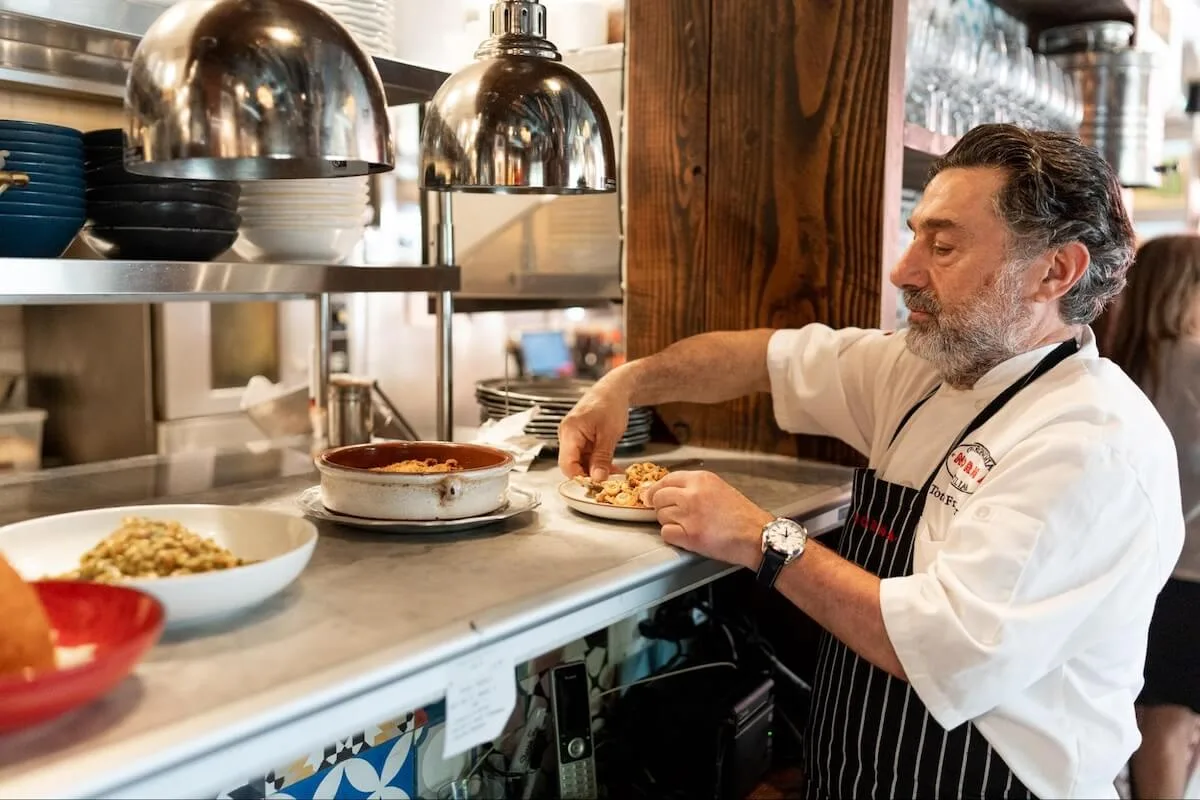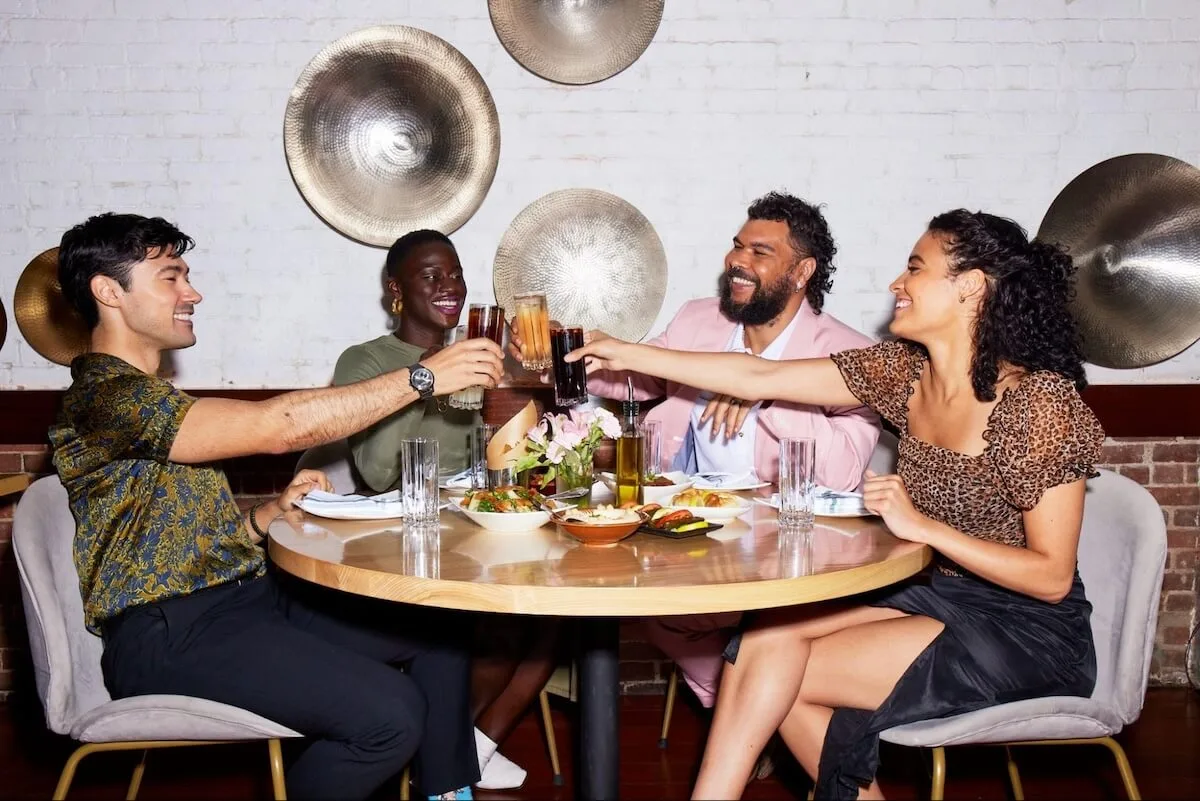Why table turnover rate matters—and 7 ways to improve yours
Skip the article and turn takeaways into action by scheduling a call with our team.
There are few more crucial metrics in the restaurant industry than the table turnover rate. Also known simply as table turnover or table turn, these phrases all refer to the average number of times tables are occupied and vacated over a given period of time. Simply put, the table turnover rate indicates the number of customers a restaurant can expect to serve during a shift. This metric provides valuable insight into how efficiently a restaurant can serve its customers and accommodate new ones.
A high table turnover rate shows that tables are being used, vacated, and refilled quickly, meaning more customers can be served. A low turnover rate indicates there are opportunities to streamline restaurant operations to improve both revenue intake and customer satisfaction.
Optimizing a restaurant’s average table turnover rate requires understanding the restaurant’s customers, looking for areas to improve in service, and setting reasonable goals. There is no optimal rate across the entire industry—rather, the average table turn needs to make sense for each establishment.
Let’s first look at how to measure your table turnover rate and the four key benefits you can expect from a high table turn. Then we’ll delve into seven tips for how to improve your table turnover—all while elevating your dining experience and increasing your customer satisfaction.

How to measure table turnover rate
Calculating table turnover rates is pretty simple, but collecting accurate data is crucial to actually making those calculations. Using top-notch restaurant software can keep that data corralled for your calculations.
The formula for figuring out restaurant table turnover is this:
Number of parties served ÷ Total number of tables = Table turnover rate, or the amount of turns
So, for example, the calculation for a restaurant that has 40 parties and 10 tables in its dining room for the dinner shift would look like this:
40 ÷ 10 tables = 4 turns
Just for reference, the average number of turns for the dinner shift is three per table.
A restaurant’s turnover rate will vary by time of day, week, and month; by specific station in the restaurant; and for individual tables and server stations. Identifying the table turnover rate at each specific time and place within the establishment can help restaurateurs determine trends affecting the average amount of time a customer spends dining, so they can focus on improving table turnover rate.
The ideal table turnover time for standard table service restaurants is roughly 45 minutes, both for maximizing revenue and server tips. Fine dining restaurants tend toward an average rate of two hours.
4 benefits of a high restaurant table turnover rate

On the surface, the math behind restaurant table turnover rates is simple: More customers served means more revenue. That’s always true, right?
Well, not quite. While the highest possible turnover rate for a specific restaurant may sound like a good thing, hustling customers out the door as quickly as possible isn’t necessarily great for the dining experience, especially at fine dining restaurants. We’ll cover that aspect in more detail momentarily, but for now let’s look at four key benefits of a high restaurant table turnover rate.
- Revenue generation: A high turnover rate generally leads to higher revenue for a restaurant, as more customers served simply means more overall sales and thus higher profitability.
- Operational efficiency: Restaurants with a high turnover rate demonstrate high operational efficiency in ordering, food preparation and service, and table cleanup, meaning the restaurant is a well-oiled machine.
- Cost management: Effective table turnover management helps restaurants reduce labor and overhead costs. Serving more customers in a shorter amount of time means needing less staff and more efficient use of physical space in the front-of-house (FOH), like tables and bar space.
- Competitive advantage: A high table turnover rate can be a make-or-break factor in a restaurant’s profitability. High turnover rates mean restaurants can serve many customers, which means they’re more likely to stay afloat in the highly competitive restaurant industry.
7 tips to improve table turnover rate

Improving your table turnover rate while maintaining high customer satisfaction is one of the great juggling acts of restaurant management. There are lots of moving parts, but when it all works together, it’s a beautiful sight to behold.
1. Streamline preparation of your menu items
Menu items that take a long time to cook can make dining take more time. Limiting your menu to as few dishes as possible can help declutter your kitchen and improve the speed of service. Similarly, nixing dishes that create bottlenecks in the kitchen can keep dining times down, especially during peak hours.
It’s essential to make sure the back-of-house is adequately staffed and that your employees are well-trained and properly equipped. Prepping dishes ahead of time is also key.
2. Make the most of your seating capacity
Check your restaurant’s layout to see if any improvements can be made. Are there tables that aren’t frequently used or seats at tables that often go unfilled? If so, consider rearranging your FOH. You can reduce table size to make more tables, for example, or shift tables around to fit more customers in the dining room. Your FOH software system can help you determine which seats are the most and least valuable.
Additionally, a good rule of thumb is to not seat incomplete parties, which can lead to serious bottlenecks in your FOH. Stragglers in a group can make what should be a one hour meal much longer, reducing your profitability and impacting your bottom line. Make this policy abundantly clear to all diners to prevent complaints.
3. Make the ordering process smooth
Upgrading to new digital ordering systems can make life easier everywhere. Staff members equipped with robust digital platforms can send orders directly from tables to the kitchen via a kitchen display system, eliminating the need to run to a stationary POS system and reducing the odds of kitchen errors. Mobile payments or contactless payments via QR code at the table can similarly speed up the seat turnover rate, no matter what type of restaurant they’re used in.
4. Get the most out of your table management system

A good restaurant FOH system can make a world of difference when it comes to table turnover rates. Systems like Yelp Guest Manager automate bookings and online reservations, provide accurate wait times for walk-ins, and allow restaurant owners to set limits on the number of customers served during a specific period of time. Seating guests can be a tricky business, especially during peak hours, so keeping the flow just right means keeping things moving without getting jammed.
Further, studying long-term data can help owners figure out the sweet spot in their table turnover time, as well as in their seating arrangement. The specific data provided by FOH software can identify which tables are the most valuable, for example, and which could use improvement.
5. Push your online reservation system
Your online reservation system can be a godsend when it works right. It’ll give you a good idea ahead of time of how many customers to expect, allowing you to make smart decisions in seating, staffing, inventory management, and more. Yelp Guest Manager’s system, for example, syncs perfectly with walk-in or waitlist seating, automating what could otherwise be a hair-pulling experience. Making reservations is now simpler than ever with booking links, which can be shared across social media platforms. This can be especially beneficial during slow periods when you need to get guests in chairs, pronto.
6. Train and retrain restaurant staff
When restaurant staff work at their most efficient, everything runs smoothly. Bussers clear tables promptly, chefs fire dishes without missing a beat, and servers manage customer interactions and food deliveries gracefully. All of this, however, requires the staff to work together well—meaning there needs to be clear communication, well-defined roles, and top-notch management.
Servers specifically will need to consider the customer experience they’re trying to provide: Diners at a fine dining restaurant expect to spend considerably more time there than those at a casual restaurant, so they shouldn’t feel rushed at all, especially since upselling via drinks and desserts can mean much higher revenues.
7. Implement a kiosk seating system
Adding a kiosk check-in system like Yelp Kiosk can help expedite the check-in and seating process. Doing so can be beneficial for both customers and the restaurant. Customers will get super accurate, automatically updated wait times (if there is a wait), and they can check in and seat themselves at the available table of their choosing. For reference, Yelp Guest Manager quotes wait times with up to 92% accuracy.
With a kiosk seating system, restaurants will be able to free up FOH staff from the host position since the grunt work of seating guests will largely be automated. Best of all, Yelp Kiosk syncs with Guest Manager to fully integrate seating, preventing any hiccups in the guest check-in process.
Hitting that sweet spot in your restaurant operations

Getting that perfect restaurant table turnover rate is a balancing act: On the one hand, you want to make sure the customer experience is great, while on the other, you need to shuffle customers in and out to keep that bottom line looking pretty.
Whether you’re running a fast food, a fast casual, or a fine dining restaurant—or anything in between—you’ll want the best tech to help make your operations smooth. We mentioned Yelp Guest Manager in this article, and for good reason: It’s the best bang-for-the-buck FOH system on the market.
With all the functionality you’d expect from a full-service FOH software suite in one place and at a flat rate, Guest Manager can handle anything thrown at it—we’re talking online reservations to customizable table management, long-term data, and much more.
We’d love to tell you more, but we’d rather show you. Reach out to us for a free demo, and we’ll get started.